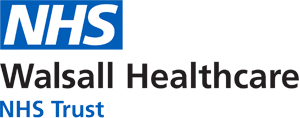Meeting our legal duties
The Equality Act 2010 and Human Rights Act 1998 are the two key pieces of legislation.
The Human Rights act asserts the right to liberty and security; respect for private and family life; freedom of expressions; and freedom of thought; conscience and religion. The law protects the right to enjoy these freedoms without discrimination. At the core of Human Rights and healthcare delivery are the principles of FREDA.
- Freedom
- Respect
- Equality
- Dignity
- Autonomy
The Equality Act 2010 protects people from discrimination in the workplace and in wider society. The Act makes it unlawful to directly or indirectly discriminate based on one or more of the 9 protected characteristics:
- Age
- Disability
- Gender reassignment
- Marriage and civil partnership
- Pregnancy and maternity
- Race – this includes ethnic or national origins, colour or nationality
- Religion or belief – this includes lack of belief
- Sex
- sexual orientation
To ensure public sector equality organisations are accountable for their performance on equality and transparent in their practices the Public Sector Equality Duty (PSED) was introduced in the Equality Act. Equality is for everyone; people should not face discrimination and should have equal opportunities irrespective of characteristics they may have. However, people with protected characteristics can experience a combination of exclusion, alienation, bullying, and harassment, isolation and may also have problems accessing public services. Evidence shows that stigma, prejudice, and discrimination can create a hostile and stressful social environment that can contribute to mental illness and other health problems. Health inequalities are unjust, unfair and unlawful – but they are also avoidable.
Legal requirements
The general equality duty is set out in section 149 of the Equality Act 2010. Public organisations including NHS Trusts are subject to the general duty and must:
- Eliminate unlawful discrimination, harassment and victimisation and any other conduct which is unlawful under the Act 2010
- Advance equality of opportunity between people who share a protected characteristics and those who do not, and
- Foster good relations between people who share a protected characteristic and those who do not
These specific duties help public bodies to deliver the public sector equality duty by requiring them to:
- Publish relevant, proportionate information showing compliance with the Equality Duty
- Publish information about decision-making and the equality data which underpins those decisions
- Be accountable to their service users and communities
- Give the public information they need to hold public bodies to account for their performance on equality
How is this achieved?
The three processes supporting equality duties are:
- Equality Impact Analysis – we analyse the effect of any policy, practice, functions, business case, and project or service change. This is an ‘Equality Analysis’ or what used to be referred to as ‘Equality Impact Assessment’. The Equality Act 2010 removed the requirement to follow a prescriptive ‘Equality Impact Assessment’, but not the requirement to demonstrate equality compliance.
The Equality Act 2010 requires all public authorities to undertake an Equality Analysis (EAs) on their policies and proposals. We are committed to ensure EIA are carried out against all policies and proposals.
- Public Sector Equality Duty (PSED) – Collection, collation and analysis of equality data, functions and information within an annual PSED Report on 30th March annually and publication of equality data on a website (our annual report for 2017-2018 is attached)
- Equality Delivery System (EDS2) – EDS2 is a governance framework through which the Trust can demonstrate its performance on issues of equality and health inequalities to patients, staff, communities and commissioners. It is delivered via public engagement and involvement in a process leading to the setting and implementation of equality objectives over a four-year period annually and publication of equality data on website. It is aligned to the NHS Outcomes Framework, the NHS Constitution and CQC Essential standards. EDS2 outcomes are matched to CQC’s five key criteria: safe, effective, caring, responsive, well led. At the heart of the EDS2 are 18 outcomes grouped into four domain.
- Better health outcomes
- Improved patient access and experience
- A representative and supportive workforce
- Inclusive Leadership
